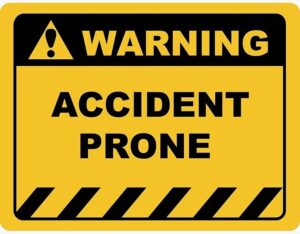
No event is simple or black and white. Anything that involves people, social context, time, human activity and randomness, constructs a ‘wicked problem’.
The more factors involved in any task the more ‘wicked’ the problem. Tackling a wicked problem with ideas of simplistic solutions or ‘fixes’ simply makes things worse (https://safetyrisk.net/safety-wicked-problem/). Attributing likelihood to a person or personality type as being more accident prone that others is dangerous.
When it comes to the nature of human persons and personality there is no ‘science’ involved. No personality indicator is about science and it is silly to try and take the framework of ‘scientific method’ to analyse personality type. This doesn’t mean that personality type is not ‘true or real’ but rather it is not validated by the myth of scientific method (https://safetyrisk.net/safety-and-the-myth-of-scientific-method/). I find it comical when engineers and scientists try to invalidate a personality indicator as if their own myth is true and that personality is a science.
Some myths are more helpful than others and, this depends on the ethic embedded in the methodology and method. No wonder Safety avoids at any cost the serious consideration of ethics and personhood. So professional.
There are many ways of knowing other than the constructs put forward by scientism (https://safetyrisk.net/understanding-mythology-myth-mythosphere-and-science-a-podcast/).
The idea of objective science is myth (https://safetyrisk.net/no-end-of-heaven-nor-scientific-age-for-safety/). Knowledge and experience are validated subjectively. This is why personality ‘indicators’ are described as ‘indicators’. If you hear anyone speaking in terms of ‘certainty’ or ‘science’ about a personality indicator, they clearly know very little about personality.
Similarly, if someone is spoken about as a ‘high-risk taker’, this is also subjective. High-risk takers are also high-level learners, low risk takers don’t learn much. Keeping everything ‘safe’ and anchoring to zero/stasis is anti-learning. High-level risk takers are also more ‘risk intelligent’ (Evans – https://archive.org/details/riskintelligence0000evan_e7l3 ) than others and know how to live better with risk than people who are risk averse.
Just because someone is a high-risk taker doesn’t mean they are less safe indeed; they are most probably more-safe than someone who is ‘risk ignorant’.
Zero is the dynamic that promotes risk ignorance. Risk is NOT the enemy of safety.
The real problem with all of this is the nature of projection, attribution and ignorance about how people learn.
When counting injury rates as a definition of safety then the language of ‘zero’ make sense. When learning is the language then zero is non-sense.
Other problems related to the attribution and projection of being ‘prone’ to accidents is that it leads to shaming and blaming the victim. In some ways it is also related to the ‘hot hand’ fallacy (https://scholar.harvard.edu/files/rabin/files/ghfta_resf.pdf). This relies on extraordinary ignorance about the nature of perception. There is no ‘hot hand’ or ‘hot streak’ (https://arxiv.org/abs/1902.01265) when it comes to the law of averages. It just depends whether someone thinks emotionally or mathematically.
Does any of this stop the attribution of Safety to accident proneness? No. This is because belief in myth doesn’t require logical or rational thinking. All myth is the same amongst the many myths of Safety (https://safetyrisk.net/risk/). As long as Safety shows no interest in understanding personhood, ethics or personality, such damaging myths will continue.
If you do wish to better understand personality, risk, culture and accidents in a constructive and positive manner, you can study here: https://cllr.com.au/



Do you have any thoughts? Please share them below